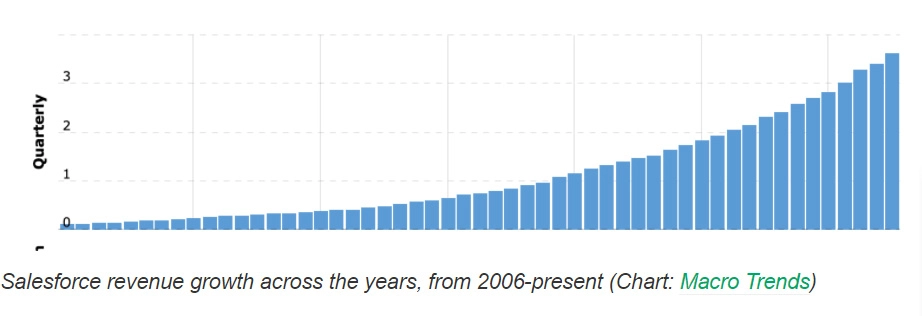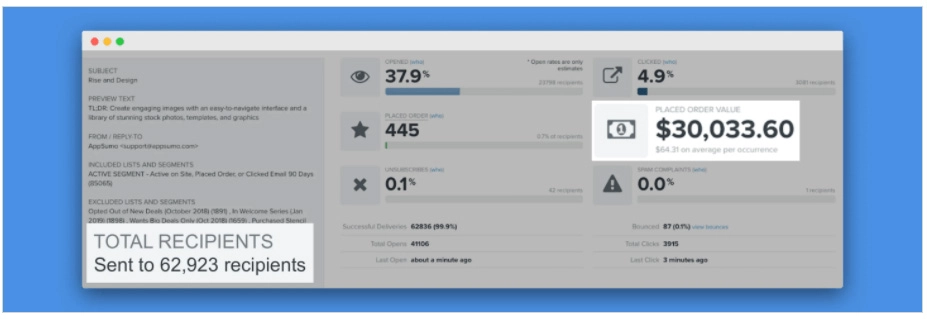
Introduction
Do you remember when it was impossible to take on tech giants like SAP, Oracle, Microsoft, IBM and others? Well, that is no longer the case. Salesforce, and later other brands with their freemium software subscription models changed all that when they started growing in a manner that was so accelerated that it seemed almost out of this world. Although it’s not until 2010 that the phrase “growth hacking” became popularized, the concept was very much in use before then.
While traditional marketing methods were in vogue at some point, today, traditional marketing is mostly a preserve of companies that have seemingly unlimited budgets. It’s rare in this decade to find a startup or medium sized business putting up billboards or paying for advertising space in newspapers. Nowadays, growth hacking is the stuff that any decent and aggressive product marketing strategy is made of. It’s how SaaS companies are launching into and penetrating their markets.
That said, growth hacking doesn’t necessarily mean that marketing is a breeze. No. Digital media has somewhat evened the platform for all brands, meaning that anyone with a super creative idea can come up with a product, start a website and market it aggressively on online media. That’s the good news. On the flip side, this could mean that your brand could be lumped together with other less reputable products. Unless you find ways to let your value shine in a market that is already so saturated, it could take years before you make it… if your brand doesn’t die first.
But, we won’t let that happen.
In this article, we will look at a few effective growth hacking techniques that have brought tremendous success to some of the big brand names you know today. We can confidently say that were it not for growth hacking, majority of these businesses would be non-existent, or, at best, they’d be experiencing a much slower growth rate.
What we will cover:
- Two brands that have growth hacked their way to success
- A five-pronged product marketing strategy to help you duplicate the success of the most notable SaaS companies
- Speed: The one ingredient that all growth hacking strategies need
Growth Hacking Example 1: How Salesforce Used Guerilla Marketing in An Offline Age
We mentioned earlier in the article how salesforce took on software giants at the turn of the 21st century. Well, that was before the digital age, so salesforce used guerilla marketing and they proved they were pretty good at it. At a time when the tech world was ruled by giant brands and software was delivered on CDs, Salesforce needed a tactic that would be disruptive and “loud” enough to attract attention.
An opportunity presented itself in 2000, during a conference launched by Siebel Systems. The salesforce team staged a protest during the conference and just like they anticipated, the protest made it to the Wallstreet journal and got publicity for Salesforce’s novel “off-premise” concept (cloud, or no-software as it was called then). Salesforce is now a multi-million dollar brand with an impressive growth record.

Growth Hacking Example 2: How Appsumo Used Email Marketing The Smart Way
Appsumo is a typical example of what you can build with patience and a carefully planned product marketing strategy. Like most startups, at its commencement, the SaaS company didn’t have a client list to write home about. But Noah Kagan, AppSumo’s founder, wanted to build an email list and grow it as big as possible. This strategy paid off as they were able to get traffic to their site and generate revenue from it.
But they didn’t stop there. As they grew, they optimized. Today, with an email list of over 1.8 million subscribers, Appsumo actively focusses its email marketing on 60,000 of its subscribers weekly and makes $30,000 off every email sent.
How did Appsumo achieve this kind of success? In his article, how to get your first 100 email subscribers, Noah Kagan talks about using these methods to market to your email list: landing pages, giveaways, contests, by-lines, exit popup, among others.

Product Marketing Strategy to Growth Hack Your SaaS Startup in 2023
While we admire the guerilla tactics used by Salesforce, a lot of the marketing activity today takes place online. Therefore, in this section, we will look at how to growth hack using the following digital marketing tools methods:
- Email marketing
- Website optimization
- Paid advertising
- Social media advertising
1. Email Marketing
Email marketing is only dead if you aren’t smart about it. Email marketing can be a powerful product marketing strategy when used to:
Nurture Leads
Customers need to be educated before they buy a product. At the end of the day, the more a prospect knows about your product, the more they’ll be comfortable converting with you. To nurture leads you require a CRM for your startup.
Email is a great medium for disseminating material meant to increase product knowledge among prospects and leads. According to 2020 b2b marketing research from the content marketing institute, 87% of marketers use email to educate customers with their content.
Find Referrals the Hassle-Free Way
Customers trust other customers. This is a gem of knowledge that has been borne out by time and experience and backed by research. Hotmail (now outlook), had this spot on when they added “P.S: I Love you. Get your free email at Hotmail”, to the end of every email. That strategy contributed to many Hotmail signups because to the recipient, that little line looked like it came from the sender.
Increase Customer LTV
A long term customer is a great opportunity for cross selling and upselling. All this begins with email marketing.
Just as you did at the beginning when your customer was still a prospect, use email to:
- Educate customers about additional ways you can add value. This leads to cross sell and upsell opportunities
- Keep customers involved in your company culture, both at work and in the communities you work in
- Reactivate dormant users
- Send product updates to keep them satisfied with their purchase
Never give up on building your mailing list. If you become so singularly obsessed with building your mailing list, you will accumulate some significant emails in a short span of time, which will pay off quite well down the line.
2. Website Optimization
No matter how good your product marketing strategy is, if customers are going to be directed to a website that is not optimized to give them a great user experience, you will experience a very high bounce rate.
So, what are some things you can do to optimize your website and increase conversions?
Live Chat
Long-response time contributes to high bounce rate. When you have live chat, customers’ expectations are met and managed as soon as they arrive on your site. With live chat, AI bots can keep your customers engaged while you sleep.
Calls-to-Action
You are probably not new to CTAs. For instance, when you write a prospecting email and tell your prospect to “call you” or “reach out to me with a suitable time to meet”, you are asking them to take an action (Call to Action-CTA).
CTAs should feature in your articles and every page of your website. No matter where on your website you place it, the job of a CTA is to direct leads to more relevant information.
Short Opt-in Forms
To build a mailing list, all you need is a name and an email address. Period. The rest are just details to help you build up a profile. While those details are important, a lot of people aren’t comfortable giving all their personal details during an initial opt-in process. Start short, and then as for more information once you establish a relationship.
One Goal Per Page
When creating pages on your website, create them based on the main purpose you want them to serve. In an ecommerce store for instance, a checkout page is built to facilitate checkout. You read the about page when you want to learn more about a company and its founders. Don’t mix intent in your pages.
Analytics
Analytics tools help you track lead performance throughout the funnel. Some useful functions of analytics include:
- Clickstream tracking
- Heat map tracking to give a better visual understanding of visitor behavior.
- Pinpointing the highest-converting lead sources
Knowing these details lets you focus your energy and resources to the best performing areas.
Social Proof
Just like referrals, social proof is a way to showcase brand value. Written and video testimonials are all great and will gain you some brand credibility.
3. Paid Online Ads
You don’t want to focus solely on paid ads when starting off. However, a product marketing strategy that features a mix of organic and paid tactics will help your organic content to rank better.
Keywords are the underpinning of a successful paid ad campaign. When it comes to using keywords, general keywords like “marketing campaign”, or “lead generation” won’t give you the results you want.
Long tail keywords convert better because they:
- Target and reach browsers whose intent is to purchase
- Hone in better on an audience’s specific needs
- Long tail keywords have lower competition, hence lower bidding costs
In addition to keywords, relevance and ad quality are of utmost importance. An ad that is perfectly suited for its audience will cost you less in the end.
4. FaceBook Advertising
FaceBook is one of the most popular social media channels for b2b use. FaceBook is great at retargeting, but, to stand out on the platform and experience significant growth, you need a substantial budget for it.
A great way to work with the budget you have is to use social media influencers. Influencers do not have to be A-list celebrities. There are many micro-influencers out there who aren’t as famous but are quite popular among their social media followers.
In addition to using influencers,
- Contests and promotions will also get you some traffic
- Collecting customer feedback through FaceBook will also give you visibility
5. LinkedIn InMail Ads
Your product marketing strategy isn’t complete if you don’t plan for LinkedIn outreach. This is because LinkedIn is a sure bet when you want to reach b2b leads.
- Inmail: InMail Ads are among LinkedIn ’s most useful features because they display ads as messages, which makes them less intrusive.
- Advanced Search: LinkedIn also has advanced search, which ensures that you can search and reach targets that are interested in what you have to sell.
To maximize the impact of your LinkedIn ads,
- Be specific. Your ads should address the unique needs of your target leads
- Give leads a reason to click on your ads. Discounts, free trials and free training are some great ways to generate interest.
- Follow up with those who click on your ads. Always keep the conversations focused on the lead and their problem. Being extra attentive to customers is key to speedy growth.
SPEED. The Key to Successful Growth Hacking
There was a time when startups had the luxury of waiting for organic growth to slowly pick up. One customer would lead to two, two to three and so on, over a span of years, or even decades.
While there is nothing wrong with growing a business in that manner, such a slow pace of growth is unfortunately quite impractical in the digital age. Ideas are super creative, visible and highly competitive. What’s more, the product marketing strategy being used by most SaaS startups is primarily the same and encompasses most if not all of the methods discussed above.
So, what’s the difference that makes the difference?
What we have also learned from most growth hacking examples is that the first company to show up with an innovative idea or trend always gets the most attention.
You need to be FAST.
That is good news because you can be fast. The great thing about being a SaaS startup is that you have flexibility. Your marketing strategies aren’t rigid, and you don’t need to go through mindless red tape to run a campaign.
Newsjacking is a great way to always show up fittingly on trending topics. It is a publicity strategy that involves putting a spin on a viral trend or news story to get visibility for your brand. With newsjacking, you can make trending hashtags all about your company depending on how you spin the trend.
Below are opportunities for newsjacking:
- Trending topics on social media platforms
- Trending hashtags on twitter
- Major upcoming events in your industry. These are great platforms for you to establish thought leadership by posting your opinion
- Google trends. This will give you an idea of which search terms are popular in your niches so that you can plan for those terms.
Conclusion
Are you ready to start attracting new traffic immediately, while also building a reputable brand image that will serve you in the long term? If so take the following steps now:
- Optimize your website
- Create FaceBook and LinkedIn profiles or improve on your existing profiles
- Plan for email marketing
- Create content
- Connect with influencers and start marketing your brand
Lastly, embrace the element of surprise. Shake things up from time to time because at the end of the day, growth hacking is about being innovative in how you reach out to customers to get the most conversions.
Our blog
Latest blog posts
Tool and strategies modern teams need to help their companies grow.

It is for fact that today's buying environment demands more. With longer sales cycles...

To build a marketing strategy that drives real results, you need more than creative i...

The 95/5 rule in B2B marketing shows that while only 5% of buyers are ready to purcha...







